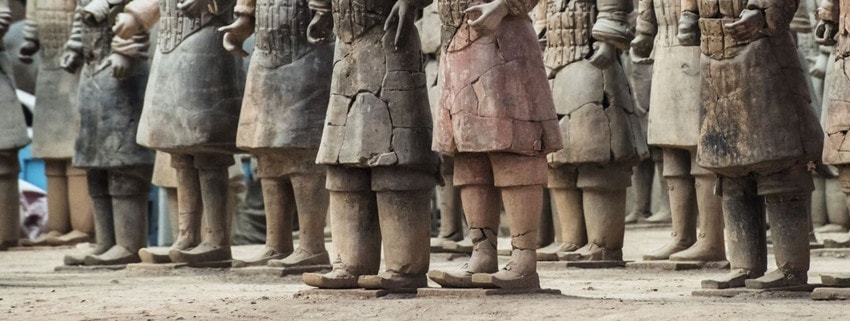Chinese Cities-Xi'an

Xi'an 西(xī)安(ān)is the capital city of Shanxi Province, and is a new industrial base and central city of science and education in China. It is also a traffic hub between east and west China and an important重(zhòng)要(yào)的(de) city in the northwest. Xi’an is located in the middle of 800-li(half a kilometer in Chinese) Qinchuan (old name for what are now Shaanxi and Gansu Provinces). It is bordered on the south by the Qinling Mountains and on the north by the Weihe River, with a terrain slopping from the southwest to the northwest. There are many rivers in the city城(chéng)市(shì).
Since ancient古(gǔ)代(dài) times, it is celebrated for “eight rivers flowing around Chang’an (the old name for Xi’an in ancient times)” Xi’an is an important center for the origin of ancient civilization in the drainage area of the Yellow River黄(huáng)河(hé). Xi’an, together with Athens, Rome and Cairo, are called the world’s four great ancient capitals.
It was called Chang’an in the ancient time. It has over 3,000 years of recorded history历(lì)史(shǐ). From the western Zhou Dynasty to the Tang Dynasty, Xi’an has been the capital of 13 dynasties for 2,000 years. The Han and the Tang dynasties are considered the zenith of Xi’an. Chang’an in the Han Dynasty was 2 times larger than ancient Rome. Chang’an in the Tang Dynasty was the largest and most cosmopolitan city in the world. After the foundation成(chéng)立(lì) of the People’s Republic of China, XI’an has always been the political center政(zhèng)治(zhì)中(zhōng)心(xīn) of Northwest China and the capital of Shaanxi Province.
Long history and advanced culture文(wén)化(huà) have endowed the city with numerous world-famous places of historical interest and scenic beauty. The Qinshihuang Terracotta Warriors and Horses 秦(qín)始(shǐ)皇(huáng)兵(bīng)马(mǎ)俑(yǒng) are the most famous one, enjoying the title of “the eighth wonder奇(qí)观(guān) in the world”.
The other famous places include the Banpo Museum of Neolithic Relics, Emperor Win Shihuang’s Mausoleum, the Qian Ling Mausoleum, and other historical sites such as the Temple of Great Maternal Grace, the Xi’an Forest of steles, and the Pool of Glorious Purity. Xi’an has a relatively advanced industry工(gōng)业(yè). Its machinery, electronics, electrical appliances, textiles and national defense industries are celebrated throughout the country. As a famous city of history and culture, it is also one of the main tourist attractions. The Big Wild Goose Pagoda is considered to be the symbol of the ancient Xi’an. It is situated in the Temple of Benevolence and Kindness. It was built at the suggestion of the eminent monk和(hé)尚(shang), XuanZang(602-664 AD).
The original Big Wild Goose Pagoda had five stories when Wu Zetian(the only empress in Chinese history) came to the throne. Now it has seven stories, with a height of 64 meters. It is one of the key cultural relics under the State protection. The Pool of Glorious Purity is an old famous著(zhù)名(míng)的(de) hot spring whose temperature is about 43 centigrade. The water in the pool contains various chemical elements that are good for medical treatment and health care. The Banpo Ruins is the largest and most complete matrilineal commune of the primitive society that lived in the drainage area of the Yellow River.
Experience Your First Class!
Get a 30-minute FREE trial to see what our online classes look like.
Apply Now







